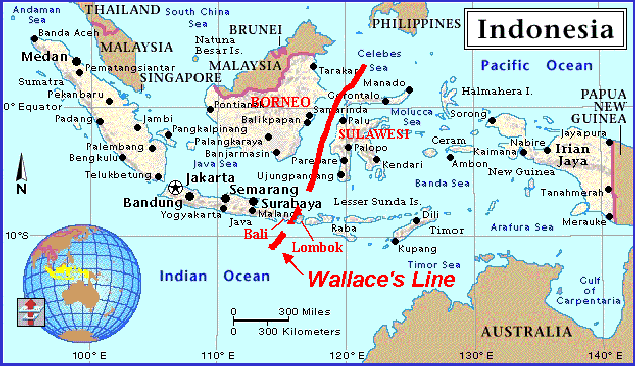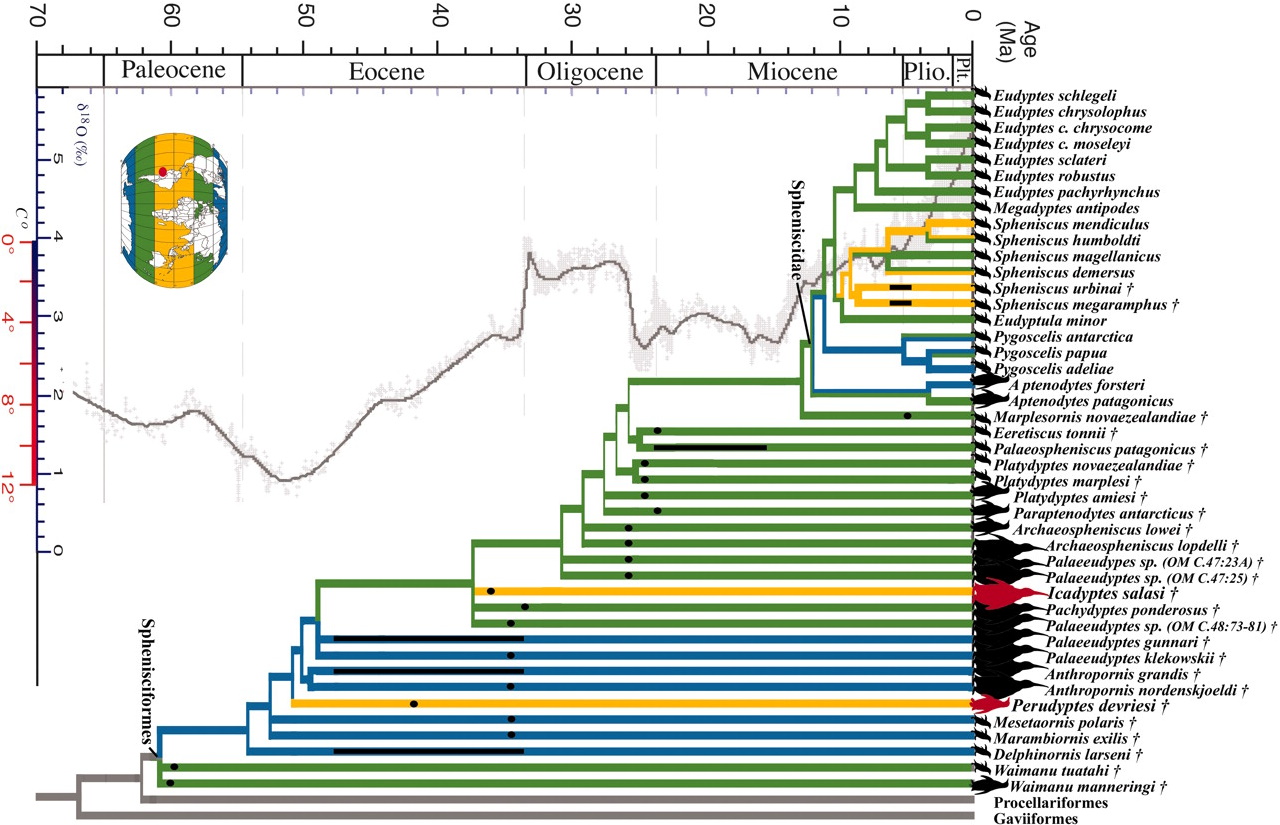 |
Stratigraphically
calibrated phylogeny of Sphenisciformes correlated with tectonic
movements and changing ocean circulation in the southern hemisphere
showing how: (1) the Australian taxa are dispersed across the phylogeny
temporally; (2) the Australian continent becomes progressively more
isolated from other southern continents; and (3) a strengthened ACC
(indicated by the black arrows) provides a new dispersal vector to
Australia despite the presence of a strengthening Antarctic Polar Front
(APF). The bottom palaeomaps are based on reconstructions in Lawver
& Gahagan [9]. Penguin silhouettes show overall trend for decreasing
body size in penguin evolution: Top, archaic giant stem penguin taxa;
middle medium-sized stem penguin taxa; bottom, smaller crown penguin
taxa (silhouette credit: Fir0002/Flagstaffotos (original photo), John E.
McCormack, Michael G. Harvey, Brant C. Faircloth, Nicholas G. Crawford,
Travis C. Glenn, Robb T. Brumfield & T. Michael Keesey, used under a
CC BY 3.0 Attribution Unported Licence
(http://creativecommons.org/licenses/by/3.0/))). Palaeoceanographic
reconstructions after [9,72-74]. Palaeoceanographic abbreviations: EAC =
East Australian Current, pEAC = palaeo-East Australian Current, pRG =
palaeo-Ross Sea Gyre/Tasman Current, RG = Ross Sea Gyre. The relative
strength of the ACC and APF is shown by thickening arrows and lines
though time. Black arrow = cold currents, red arrows = warm currents.
Credit: Park et al.; CCAL |
Multiple dispersals of penguins reached Australia after the continent
split from Antarctica, including 'giant penguins' that may have lived
there after they went extinct elsewhere, according to a study published
April 26, 2016 in the open-access journal PLOS ONE by Travis Park from
Monash University, Australia, and colleagues.
Penguin evolution in Australia following the continent's pre-historic
split from Antarctica is not well-understood, but the fossil record
shows that Australia was home to a number of penguin species.
Only the
little penguin remains today, and pre-Quarternary evidence of this
species and its ancestors in Australia is lacking. To update our
understanding of Australian penguin evolutionary history, the authors of
the study analysed recently collected penguin fossils and compared them
to known species, including now-extinct 'giant penguins,' and presented
a new phylogenetic tree in the context of biogeographical events on the
Australian continent.
The authors propose that Australia's unique biogeographical history
allowed for multiple dispersals of penguins to the continent during the
Cenezoic or Age of Mammals, and that ancestors of the modern little
penguins arrived in Australia with the help of a strengthened Antarctic
Circumpolar Current.
While evolutionary trees are constructed as best estimates based on
sometimes-limited fossil records, the authors suggest these findings
shed new insights into the evolutionary trajectory of penguins in
Australia.
Reference:
Travis Park, Erich M. G. Fitzgerald, Stephen J. Gallagher, Ellyn
Tomkins, Tony Allan. New Miocene Fossils and the History of Penguins in
Australia. PLOS ONE, 2016; 11 (4): e0153915
DOI: 10.1371/journal.pone.0153915
Note: The above post is reprinted from materials provided by PLOS.
source










No comments:
Post a Comment